Mike Captures Double Rainbow

They say there is a rainbow around every corner.
This spectacular double rainbow was captured over the Vale of Neath to brighten up a grey day.
Image by RDN photographer Mike Davies

They say there is a rainbow around every corner.
This spectacular double rainbow was captured over the Vale of Neath to brighten up a grey day.
Image by RDN photographer Mike Davies
The Swansea Workhouses
This month’s speaker was Mr Bernard Lewis of Cimla, a noted local historian and author. His topic was to follow a day in the life in the Swansea Workhouse in the nineteenth century. He began by noting that our perception of workhouses was the portrayal handed down by Charles Dickens in novels such as Oliver Twist and David Copperfield, yet this only gave half the story. The grind of the Dickensian novels belong more to the Poor Law which had been in force since the days of Elizabeth the First. Under the Poor Law each parish was entrusted to look after its poor, providing Poor Houses and alms to the poor and impoverished including medical care and burial. The level of care depended largely on the wealth of the particular parish and varied immensely .However, the revised New Poor law of 1834, the brainchild of Edward Chadwick gave the system a better organization and structure.
Firstly, under the Act, local parishes were combined to form Unions or Workhouse Trusts. Each Trust or Union would have a Clerk and Commissioner who acted as paid professional officials. The idea behind the Workhouse was one of deterrence and therefore they were far from pleasant places, with sometimes whole families forced to enter the institution. The original workhouse in Swansea was situated next to the Castle, but after the formation of the Swansea Workhouse Union it moved to the Bathing House, and re-titled a “House of Industry”. The residents were kept busy doing mind numbingly boring and repetitive tasks such as “picking oakem”, which entailed untangling hemp ropes. The residents also slept in wards; similar to what you would expect in a hospital .The next workhouse in Swansea was opened in 1863 at a cost of £16,000 in what is now known as Mount Pleasant. It remained a workhouse as late as 1949, when it changed roles to become Mount Pleasant Hospital.
Workhouses were regularly inspected and the description of the residents was graphically unkind. They were described as “lunatics” and “the dregs of society. Notice was also drawn to the fact that there was little opportunity for exercise and the water supply for 200 hundred completely inadequate and insanitary. Lighting was exclusively by candlelight, sexes were separated and the toilets very rudimentary. In order to make life even harder in the workhouse, during the 1860s when the numbers in the Swansea workhouse increased to 235, the authorities responded by pushing the beds closer together! If there was no room in the workhouse for “in-relief”, younger people would receive “out relief”, in form of a dole or chit which they would be able to exchange in local shops for food.
Entrance to the workhouse was entirely voluntary, so long as the Master of Guardians agreed to your application. Others were directed to the workhouse if they had fallen on hard times or were destitute. Sometimes, Unions would exchange residents. Mr Lewis gave examples of Swansea residents being returned from Bristol, a process known as “removal”. The workhouse would provide medical care and treatment, though as was stated earlier the emphasis was that this was far from being the easy option.
One aspect of the administration of the records was that meticulous records were kept as to how long the residents had been in the workhouse. Routine was similar to a prison with the one important proviso that you could leave whenever you liked. The master and the matron were often colourful characters with former soldiers often fulfilling the role. Several of these key figures were dismissed by the Board of Guardians owing to misdemeanours including drunkenness and sexual dalliance. In addition, a positive aspect of the regime was that the “pauper” children were educated by the workhouse and remarkably for the period corporal punishment was not encouraged. In addition, sometimes the workhouse would pay for the children to be educated in local schools.
Mr Lewis then gave an outline of the typical day in the workhouse which began with prayers at 6:00 am, followed by breakfast at 7:00. Work periods ensued until midday when dinner was served. At six o’clock work finished for the day, and this was followed by a supper of bread and cheese. The diet was also regulated with a variety of set meals supplemented with gruel. It should be noted that the residents made no financial contribution and indeed they benefitted from the doctors’ fees which were sometimes rather hefty and were also buried in paupers graves, should the need arise. However, any bad behaviour by the residents was punished rather harshly.
Mr Lewis finished his talk by alluding to the contribution of Edward Chadwick to the public life of the UK during the nineteenth century. Indeed, despite being rather unpopular with his fellow politicians, who deliberately pensioned him off at one stage, his contribution to the society in which we now live is obvious. He was instrumental in the introduction of Death Registration (1836), the County Police Act (1838), the Public Health Act and also the Civil Service Examinations of 1971.
Following a question and answer session, Trefor Jones thanked Mr Lewis for a most interesting lecture and noted that our present social security system certainly owes something to the philosophy of the Workhouse.
Trefor Jones
VALE OF NEATH MEDICAL CENTRE
OFFICIAL OPENING CEREMONY

Although the ‘all new’ impressively spacious Vale of Neath Medical Centre has been receiving patients since 19th August, the Ceremony to officially open the Centre was held on Monday 14th October 2019 at 3pm.
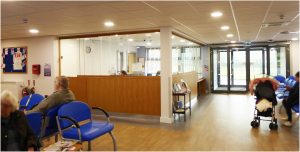
Waiting & Reception Area
This long awaited building has two floors, the ground floor for Doctors Consulting Rooms and Treatment Rooms along with a glass fronted Reception Area, and a first floor accessed by stairs/lift for treatments, various clinics and offices for the staff.
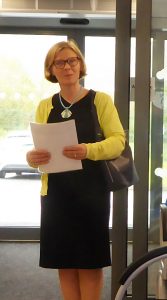
Emma Woolett
A small group of invited guests including representatives from the Architects (Austin Smith:Lord), Building Contractors (John Weaver Contractors), PPG (Patient Participation Group), local Councillors, NHS Doctors/Staff were present to celebrate the occasion and to hear a short speech given by Emma Woolett, Chair of the Swansea Bay University Health Board as she explained that the development project had taken over a decade to come to where we are today as there had been complex issues and problems that had to be resolved along the way. She went on to say that the finished project was well worth the wait and thanked everyone involved and connected with the development for their hard work.
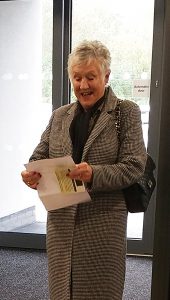
Carolyn Edwards
The next speaker was Carolyn Edwards Chair of the PPG (Patient Participation Group) who stated that she was delighted to be part of the official opening of the Vale of Neath Medical Centre. She said that the PPG had always been fully involved in the project from the start which was, in her words ‘a very long time ago indeed’.
She was also proud to say that the PPG had been instrumental in the purchase of the ‘hook up’ for the Breast Care Services, and for the Screen Displays situated at various points in the building. She said she was pleased to have the opportunity to thank everyone and hoped that the PPG would continue to be involved in the future.
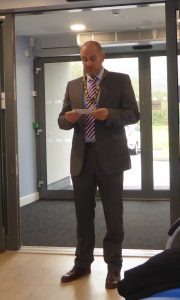
Simon Knoyle
The final speaker was Simon Knoyle, the Glynneath Town Mayor who also praised the ‘new build’. He said it was good to finally have a much needed facility for Glynneath, Cwmgwrach, Resolven and all the surrounding areas of the Vale of Neath. It had been a long time coming and ended by thanking all the patients for their patience.
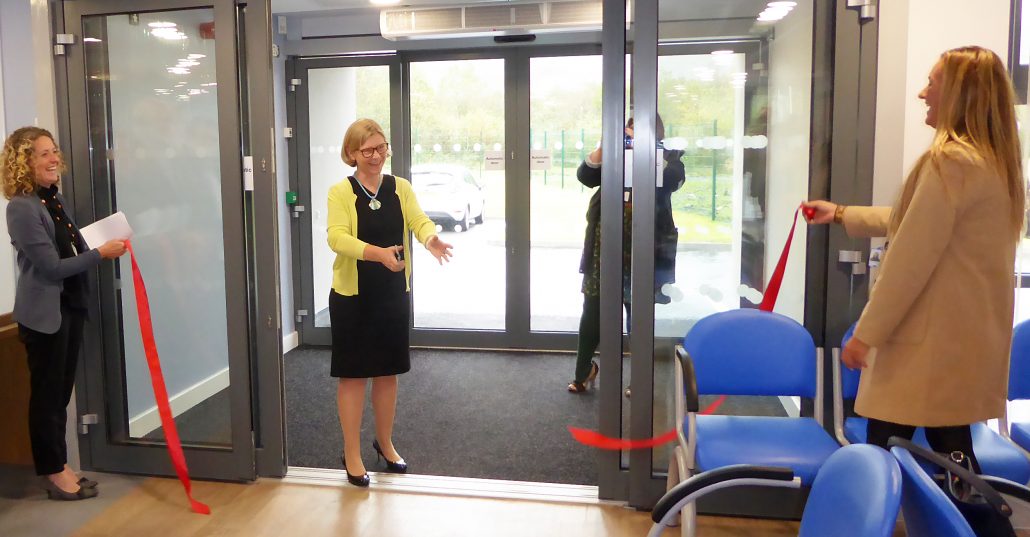
After the speeches, it only remained to cut the red ribbon draped over the doors and this was done by Emma Woolett, before all present were asked to enjoy light refreshments with some of the staff in a relaxed and informal atmosphere on the first floor.
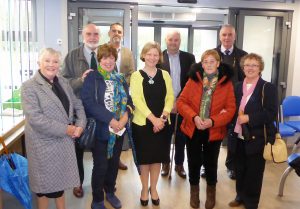
Some members of the PPG (Patient Participation Group) & local Councillors with Emma Woolett

At the rear entrance to the building
~ ~ ~
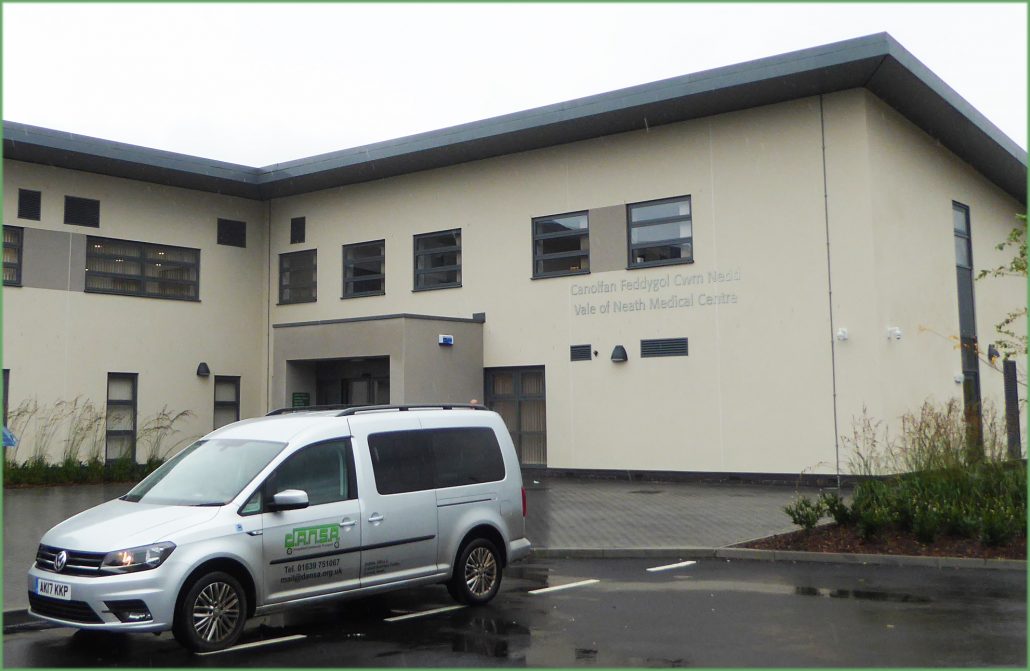
This is the Patient Transfer ‘D.A.N.S.A.’ bus near the front entrance, used to transport patients to and from the Medical Centre.
Approximate pick up times from 4 November 2019 shown below
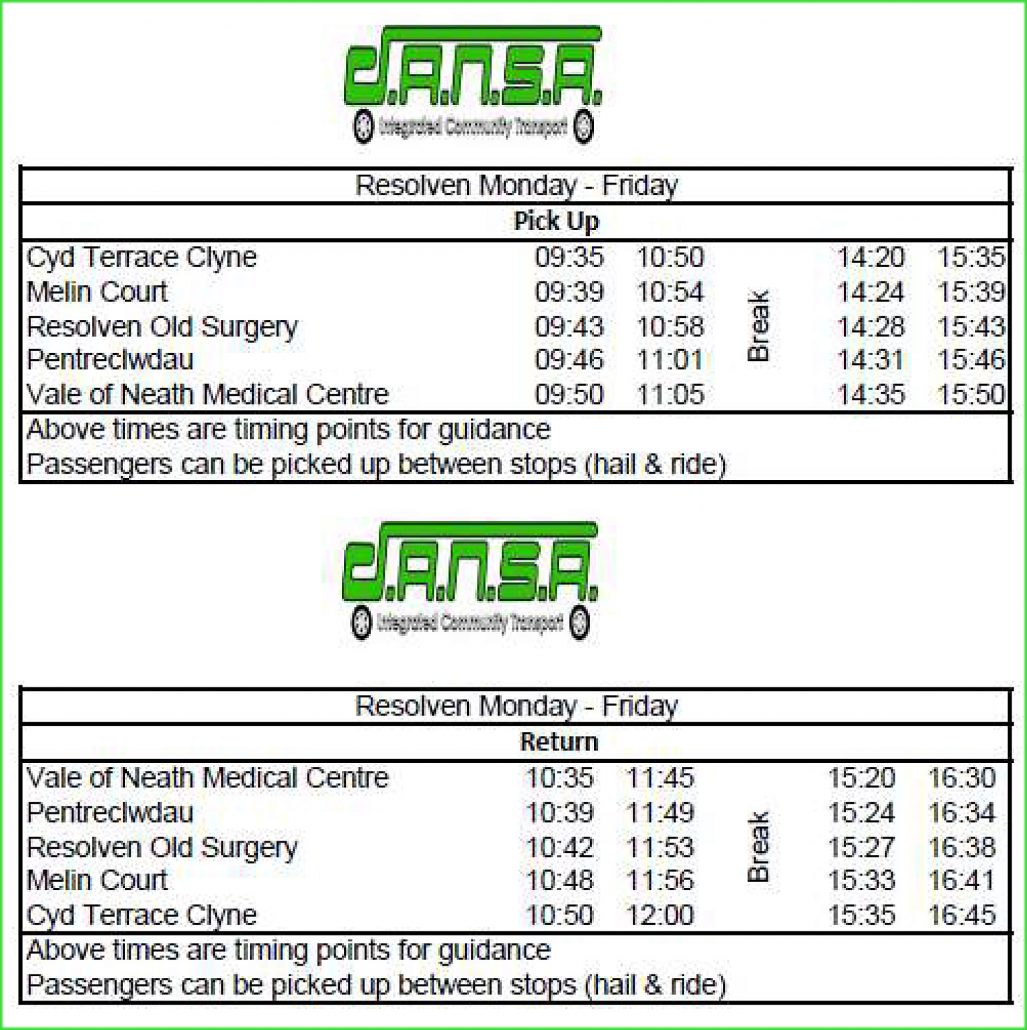
Pick Up times Amended on 4 November 2019
~ ~ ~
What is PPG (Patient Participation Group)?
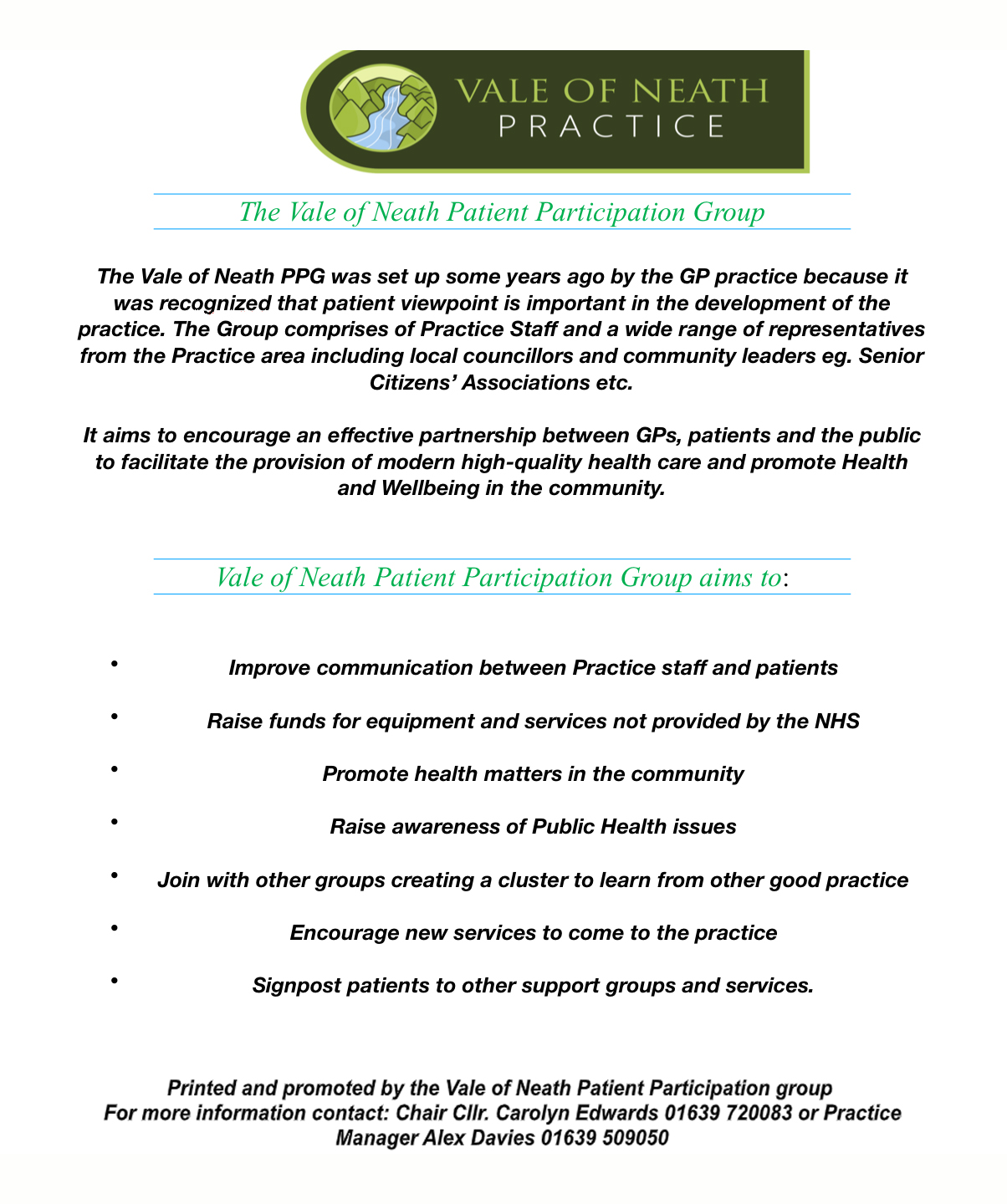
~ ~ ~ ~
Report by Hugh & Lorna Lewis
A lunch was held at St Cadoc’s Church on the 5th Sunday of September.

This was an ideal opportunity for friends who do not normally attend Church on a regular basis to join us for a relaxed meal and a chat.
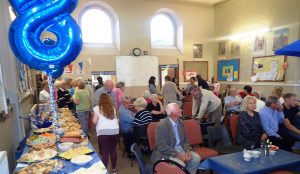
Church members brought along a plate of food to share and people were very generous with their portions.
Everyone enjoyed their time to eat, chat and relax and this will be repeated. The next 5th Sunday will be Sunday 29th December at St David’s Church Hall, Resolven at 10.30am
All are welcome.
Ruth
An Autumn Cream Tea was held at St David’s Church Hall on Saturday 5th October.
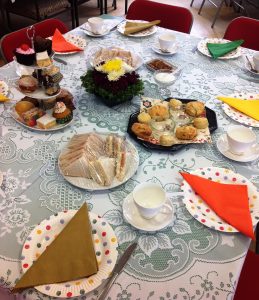
After much preparation the day arrived that Mair and I had worked towards for several weeks with help from others leading up to the day and also on the day. Thank you
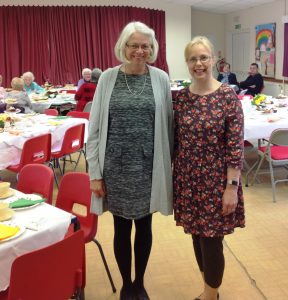
RUTH JONES and MAIR HAMBLY
A lovely crowd of 60 people turned out to enjoy sandwiches, pastries, a variety of cakes and scones with jam and cream.
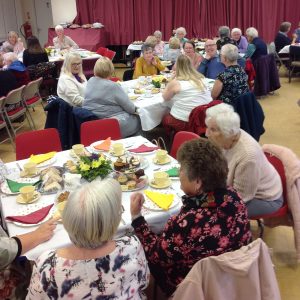
A raffle was held with a lovely selection of prizes donated from local organisations and many individuals. The beautiful table decorations were also given away. Labels had been put underneath a chair from each table. If you were sitting on that chair then you were the proud owner of the beautiful centre piece.
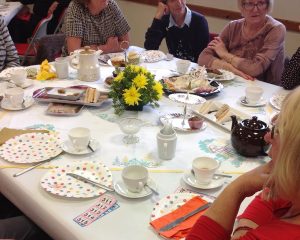
Not much left on this table!!!
The Cream Tea raised £630 for St David’s Church.
REPORT by RUTH JONES
